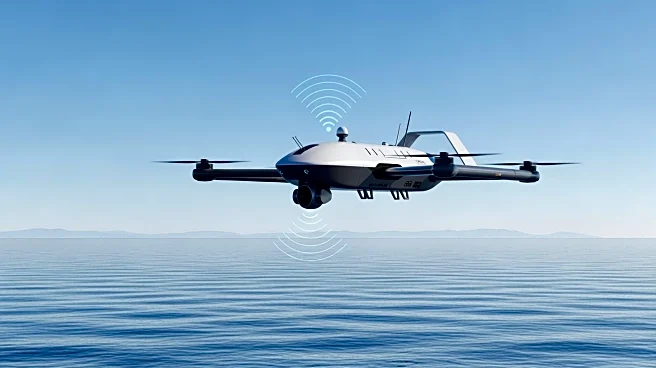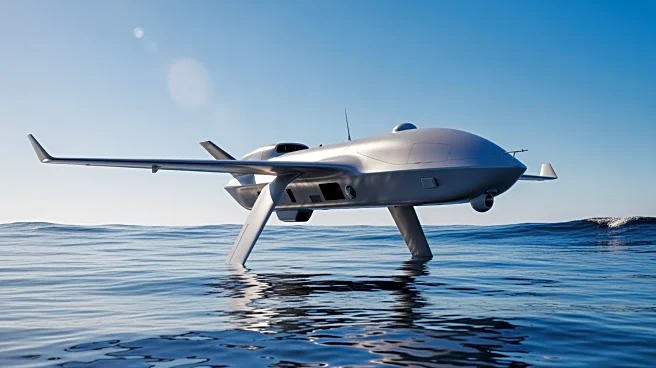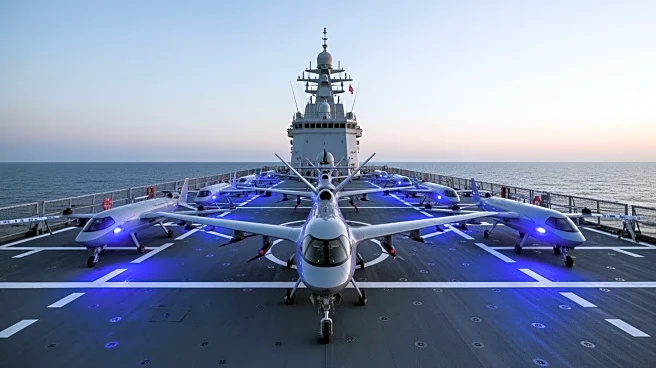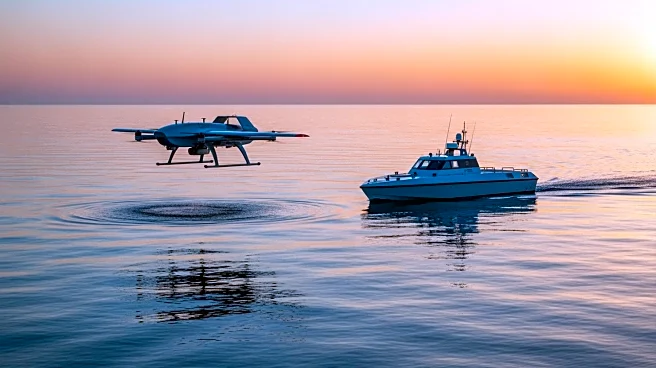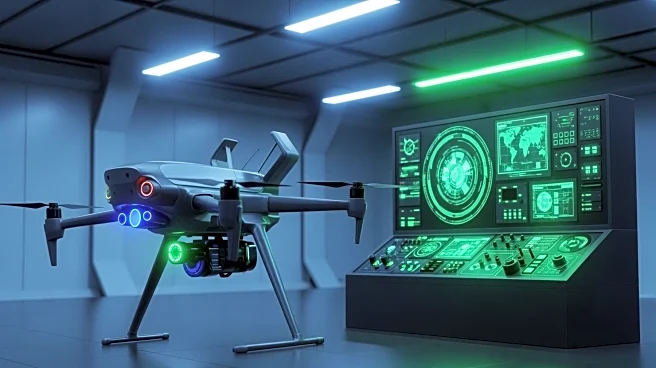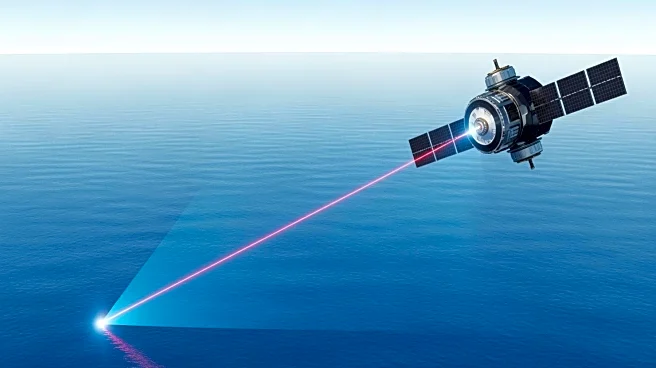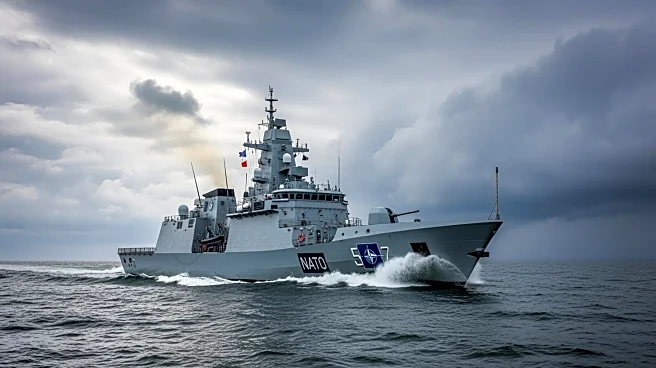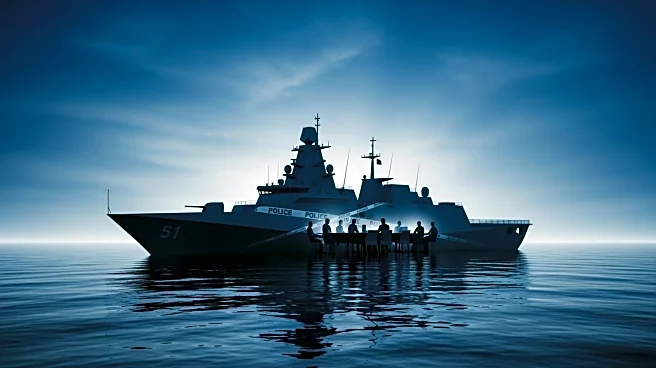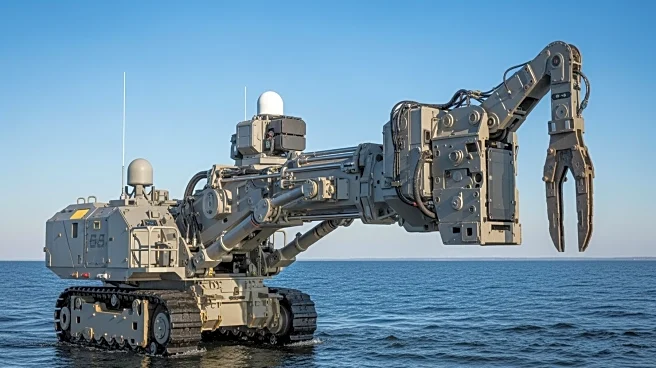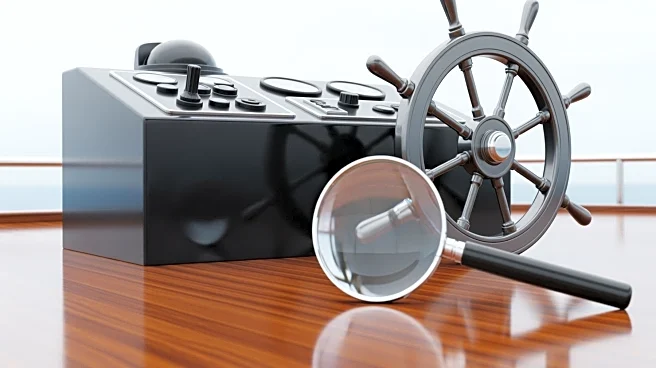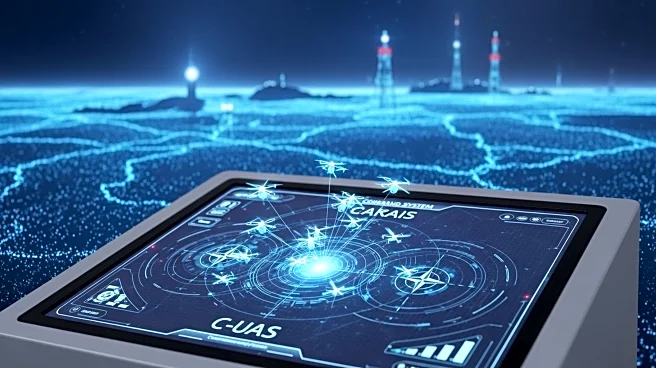What's Happening?
NATO is in the final stages of developing STANAG 4817, a standard designed to enhance the interoperability, integration, and interchangeability of maritime unmanned systems (MUS). This standard is part
of NATO's efforts to improve command-and-control (C2) capabilities for unmanned underwater vehicles (UUVs) and other MUS. The development of STANAG 4817 is crucial for enabling high-level C2 interoperability and supporting maritime situational awareness. The standard has been tested in real-world operational environments, such as the Task Force X Baltic, to ensure its effectiveness in integrating data and enhancing maritime security.
Why It's Important?
The implementation of STANAG 4817 is significant for NATO's maritime operations, as it addresses the growing need for standardized C2 architectures in the deployment of UUVs. As underwater threats and the demand for surveillance increase, the ability to operate MUS at scale becomes essential. The standard provides a blueprint for integrating unmanned systems into NATO's broader operational framework, enhancing situational awareness and security. This development is crucial for NATO member states, as it facilitates collaboration and ensures that unmanned systems can be effectively utilized in multidomain operations.
What's Next?
With STANAG 4817 nearing ratification, NATO member states will need to adopt and implement the standard to ensure interoperability across their maritime operations. The standard's success will depend on continued collaboration among member states and industry stakeholders to refine and enhance C2 capabilities. As the use of unmanned systems expands, NATO will likely focus on further developing standards and technologies to support their integration into complex operational environments. The ongoing evolution of STANAG 4817 will play a critical role in shaping the future of maritime security and defense strategies.
